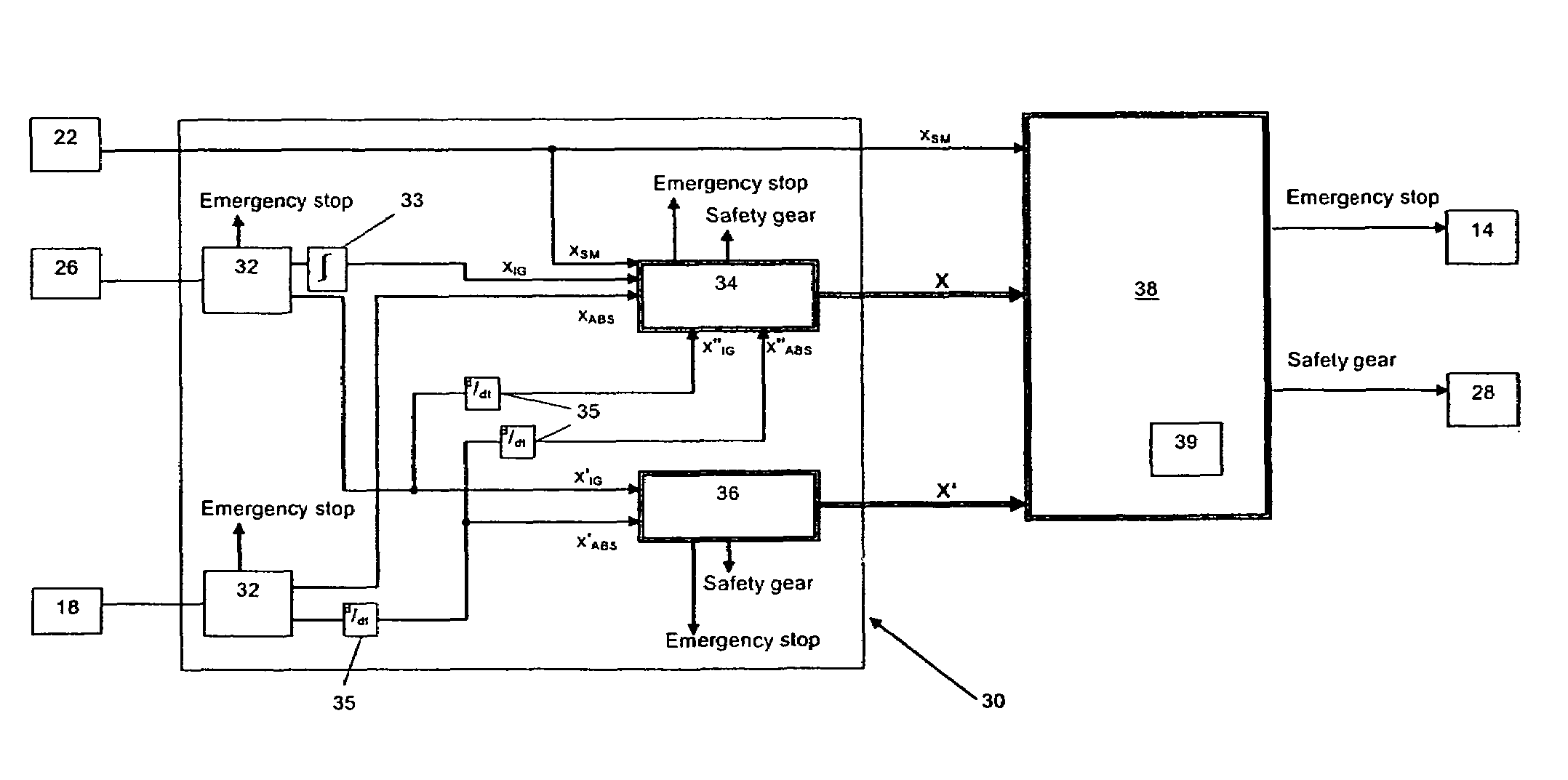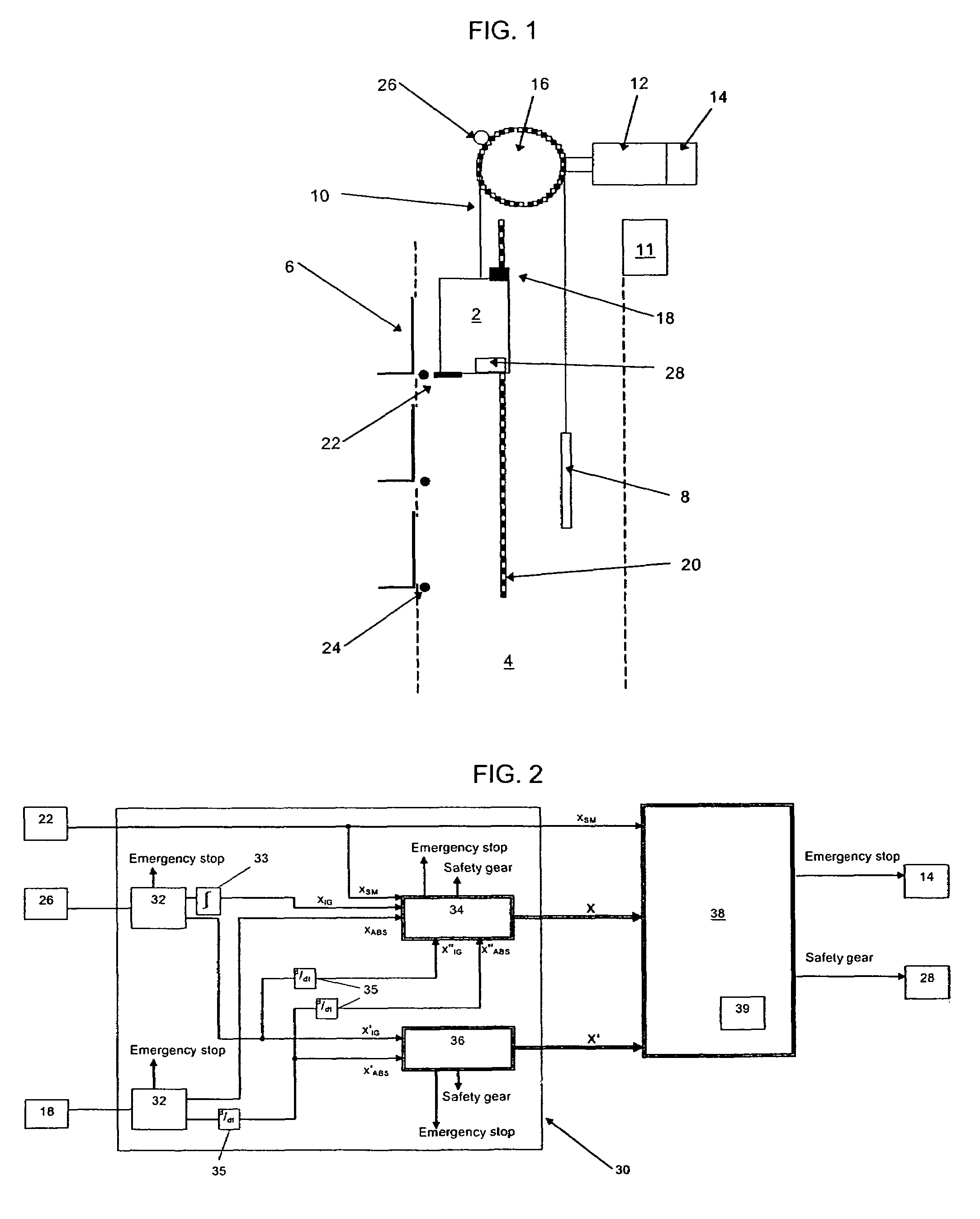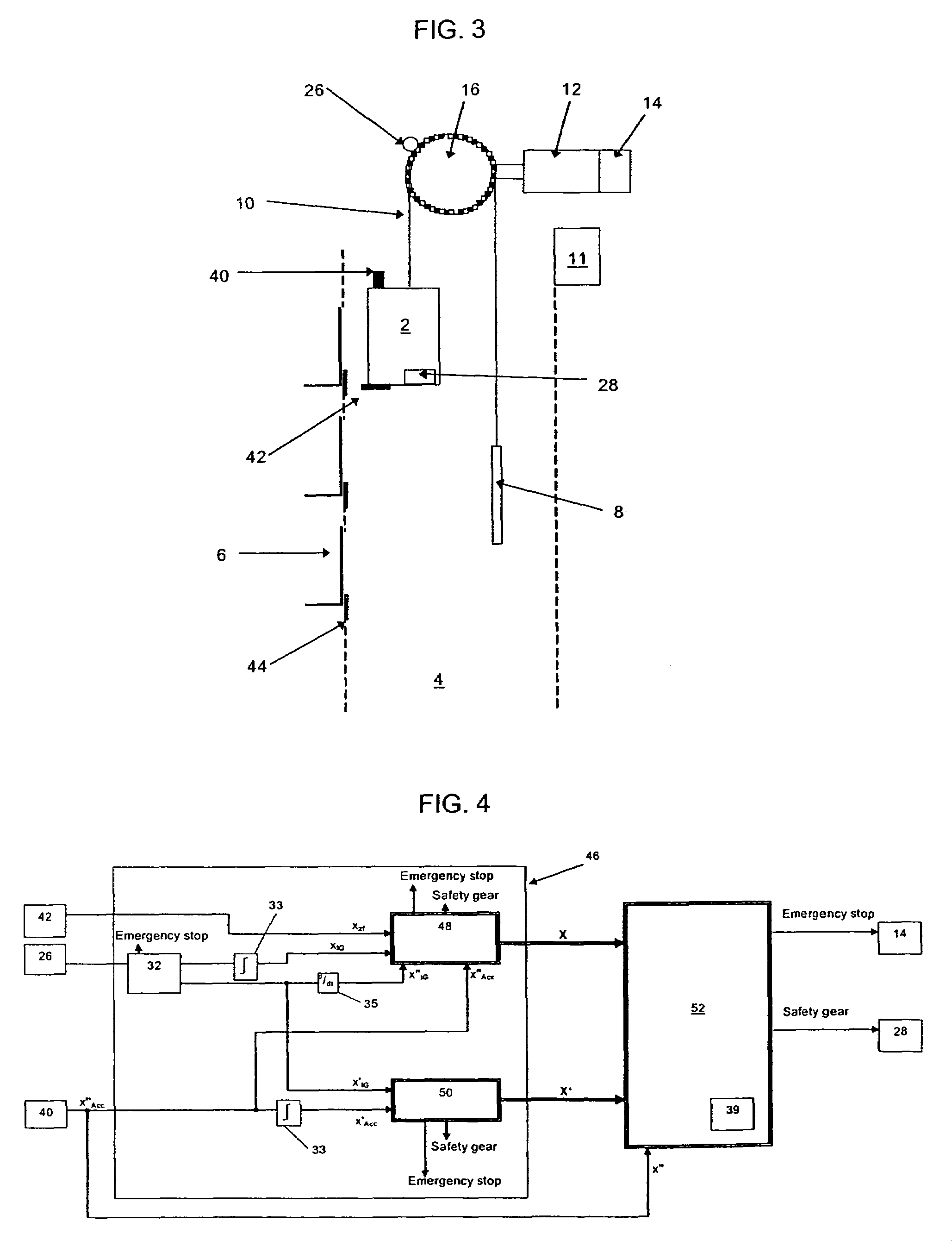Elevator supervision
a technology for elevators and safety chains, applied in elevators, building lifts, transportation and packaging, etc., can solve the problems of relatively old “tried and trusted” mechanical or electromechanical principles, relatively expensive systems, and partial redundancy in the collection of information within existing elevator installations, so as to enhance the operating performance of elevators and simplify components
- Summary
- Abstract
- Description
- Claims
- Application Information
AI Technical Summary
Benefits of technology
Problems solved by technology
Method used
Image
Examples
first embodiment
[0020]FIG. 1 illustrates an elevator installation according to the invention. The installation comprises a car 2 movable vertically along guide rails (not shown) arranged within a hoistway 4. The car 2 is interconnected with a counterweight 8 by a rope or belt 10 which is supported and driven by a traction sheave 16 mounted on an output shaft of a motor 12. The motor 12 and thereby the movement of the car 4 is controlled by an elevator controller 11. Passengers are delivered to their desired floors through landing doors 6 installed at regular intervals along the hoistway 4. The traction sheave 16, the motor 12 and the controller 11 can be mounted in a separate machine room located above the hoistway 4 or alternatively within an upper region of the hoistway 4.
[0021]As with any conventional installation, the position of the car 4 within the shaft 4 is of vital importance to the controller 11. For that purpose, equipment for producing shaft information is necessary. In the present exam...
second embodiment
[0039]FIGS. 3 and 4 show the present invention in which the shaft magnets 24 and magnetic detector 22 of the previous embodiment have been replaced with conventional zonal flags 44 symmetrically arranged 120 mm above and below each landing floor level together with an optical reader 42 mounted on the car 2 to detect the flags 44. Additionally, the absolute position encoder 18 has been replaced by an accelerometer 40 mounted on the car 4.
[0040]Within the data verification unit 46 of the present embodiment, the signal XIG derived from the incremental pulse generator 26 is compared with and calibrated against the position signal XZF from the optical reader 42. The distance ΔXZF between successive flags 44 is recorded and compared to the corresponding distance ΔXIG derived from the incremental pulse generator 26. If this comparison gives rise to a deviation in the two distances of two percent or more then an emergency stop is initiated by de-energizing the motor 12 and actuating the bra...
PUM
 Login to View More
Login to View More Abstract
Description
Claims
Application Information
 Login to View More
Login to View More - R&D
- Intellectual Property
- Life Sciences
- Materials
- Tech Scout
- Unparalleled Data Quality
- Higher Quality Content
- 60% Fewer Hallucinations
Browse by: Latest US Patents, China's latest patents, Technical Efficacy Thesaurus, Application Domain, Technology Topic, Popular Technical Reports.
© 2025 PatSnap. All rights reserved.Legal|Privacy policy|Modern Slavery Act Transparency Statement|Sitemap|About US| Contact US: help@patsnap.com



